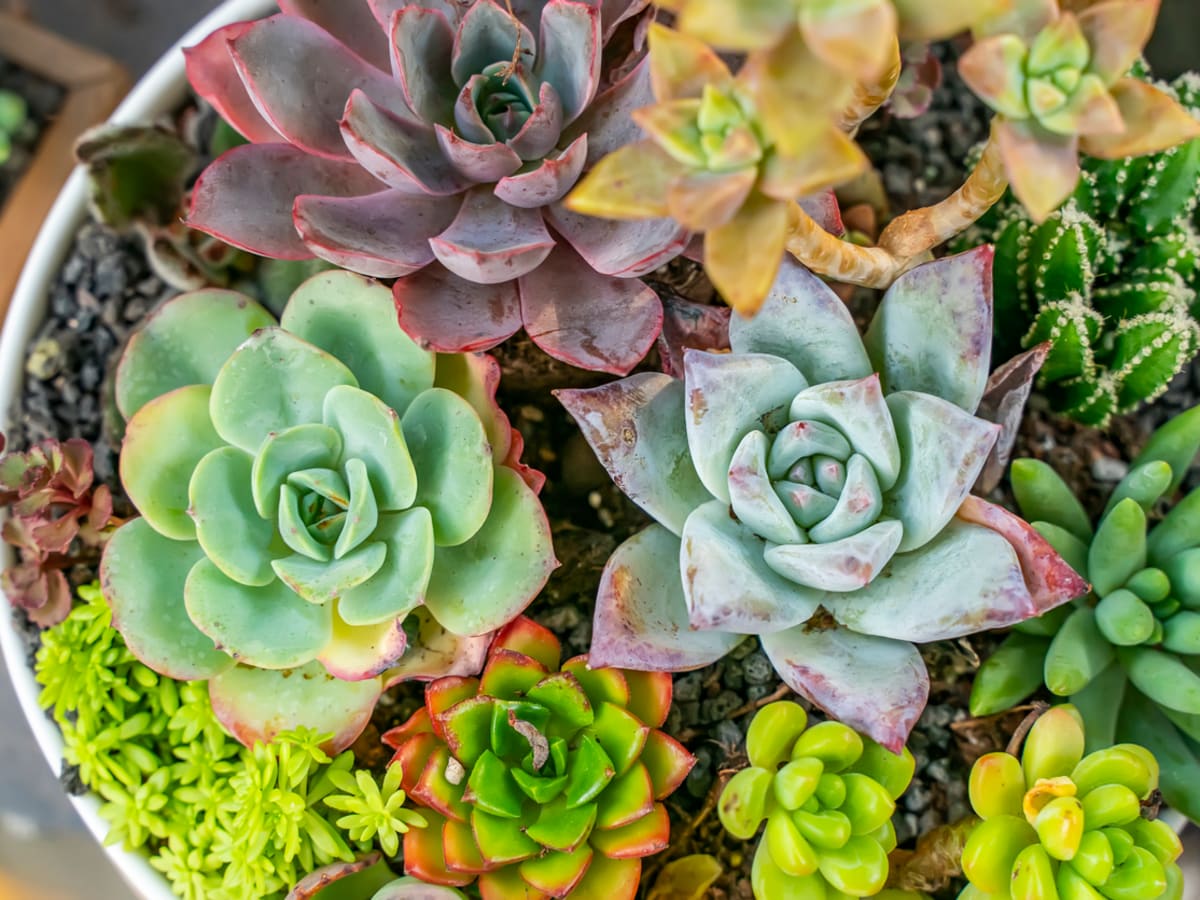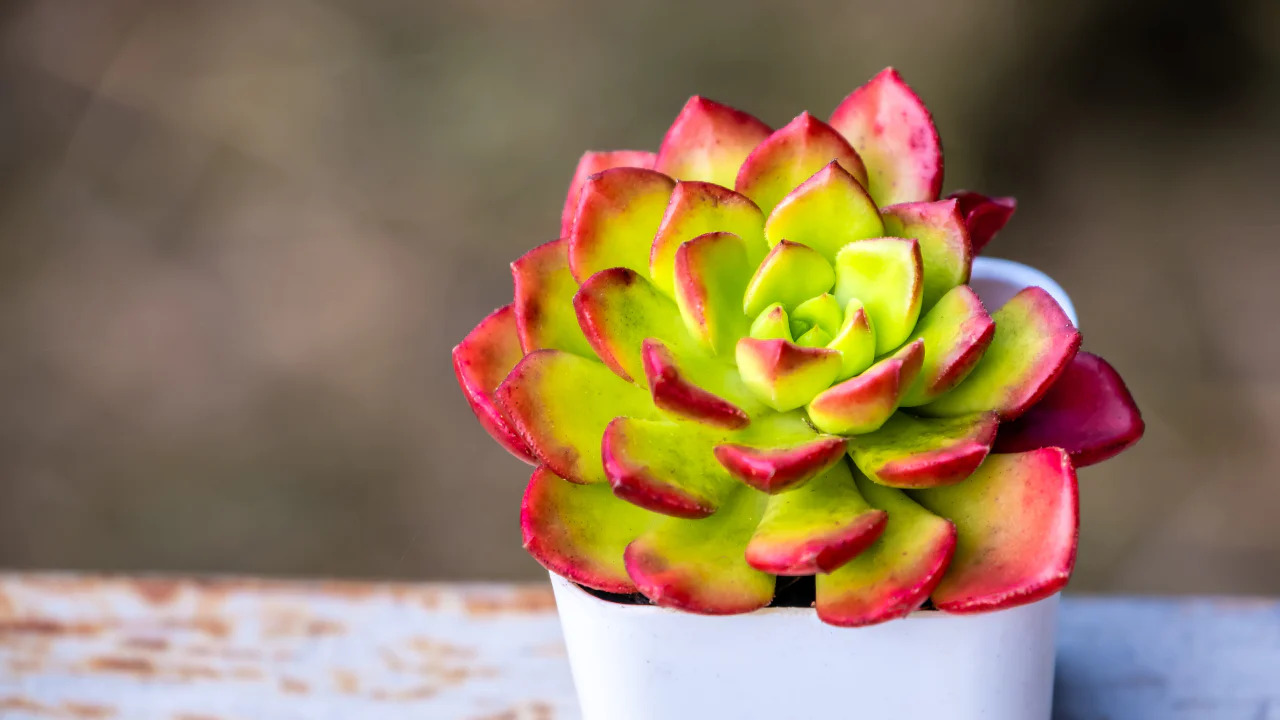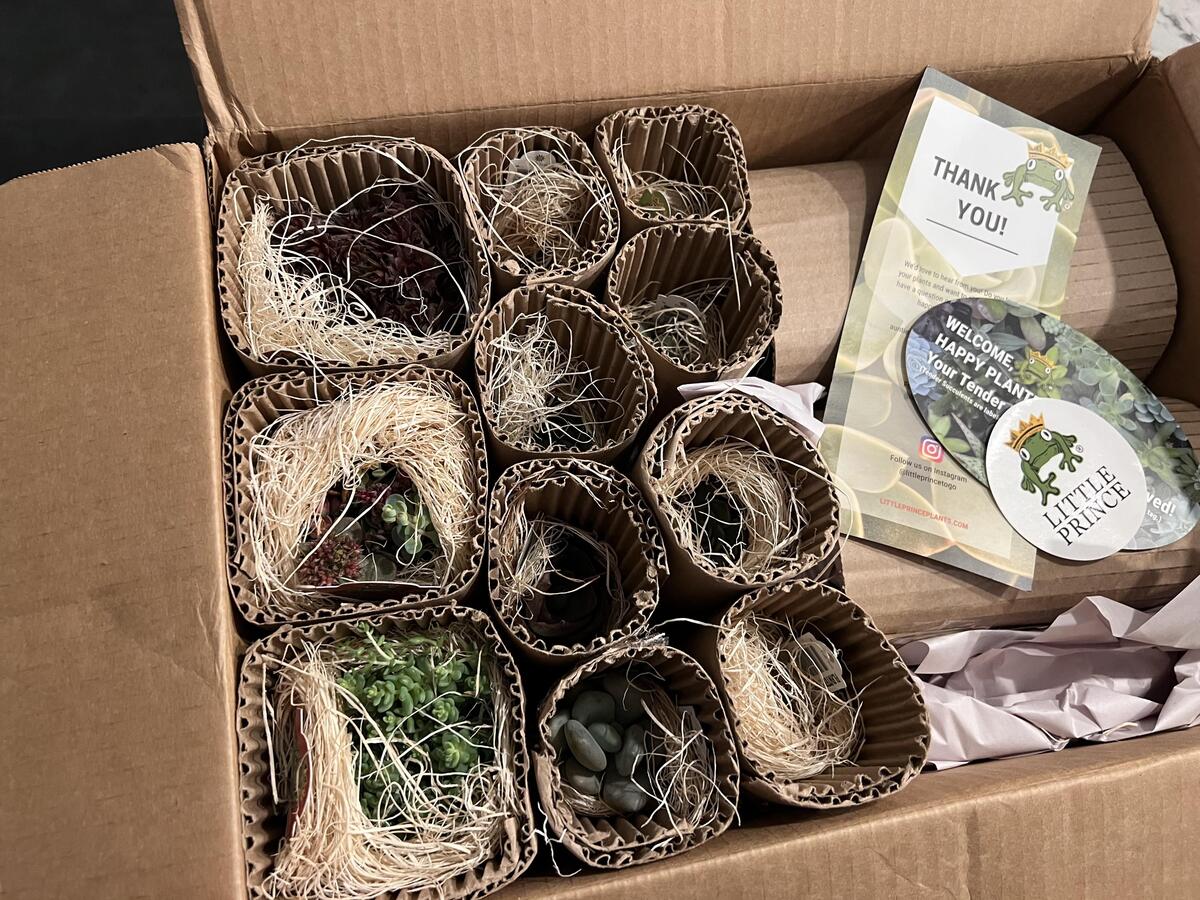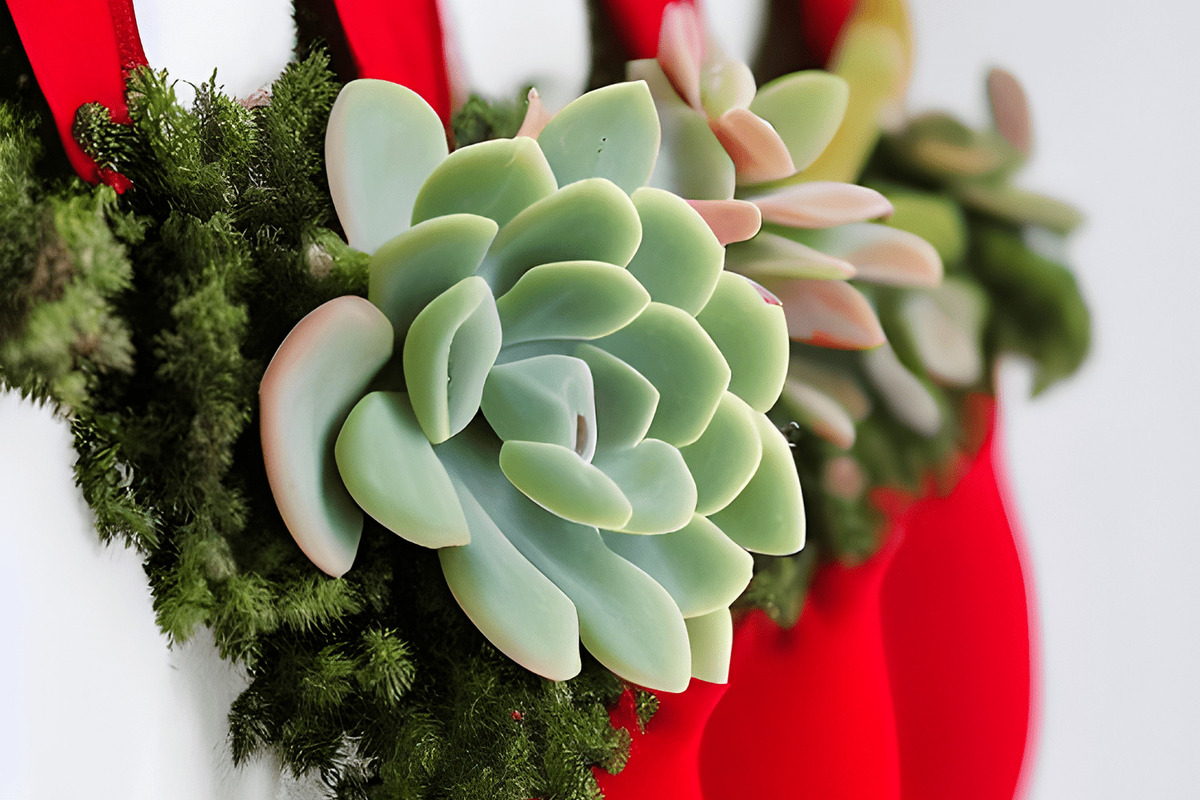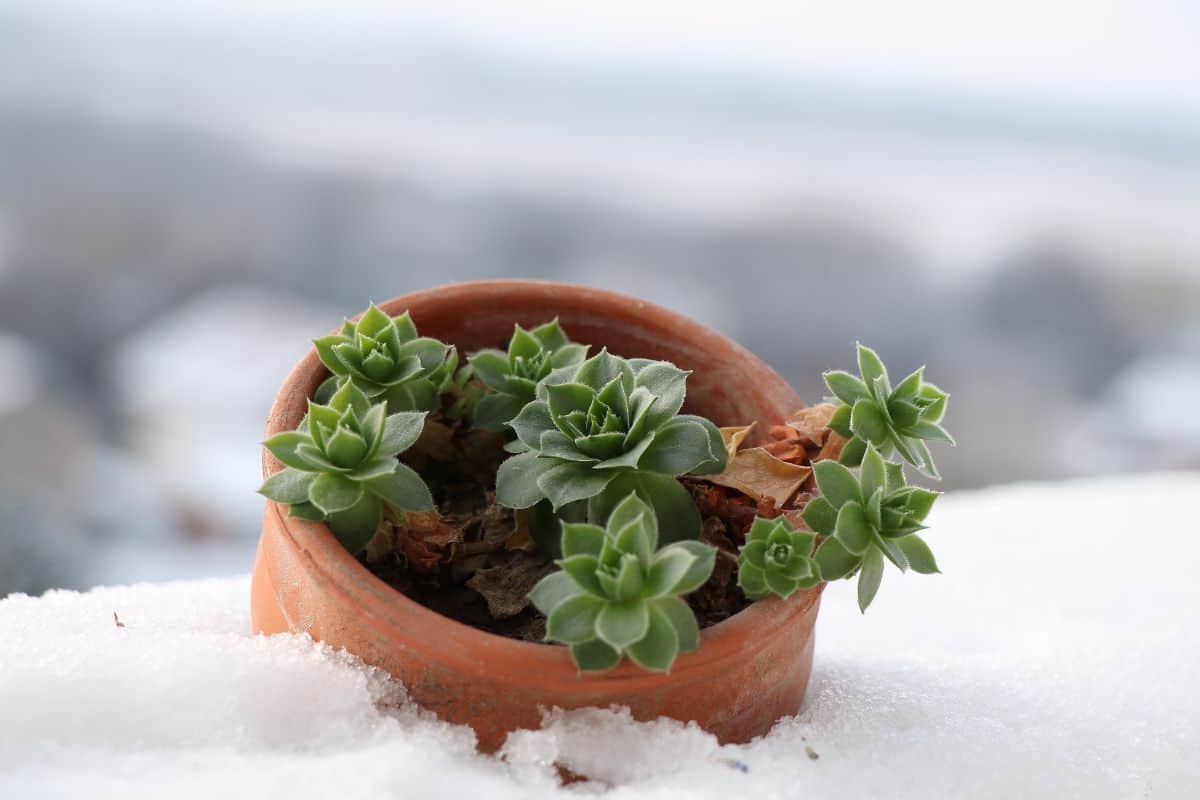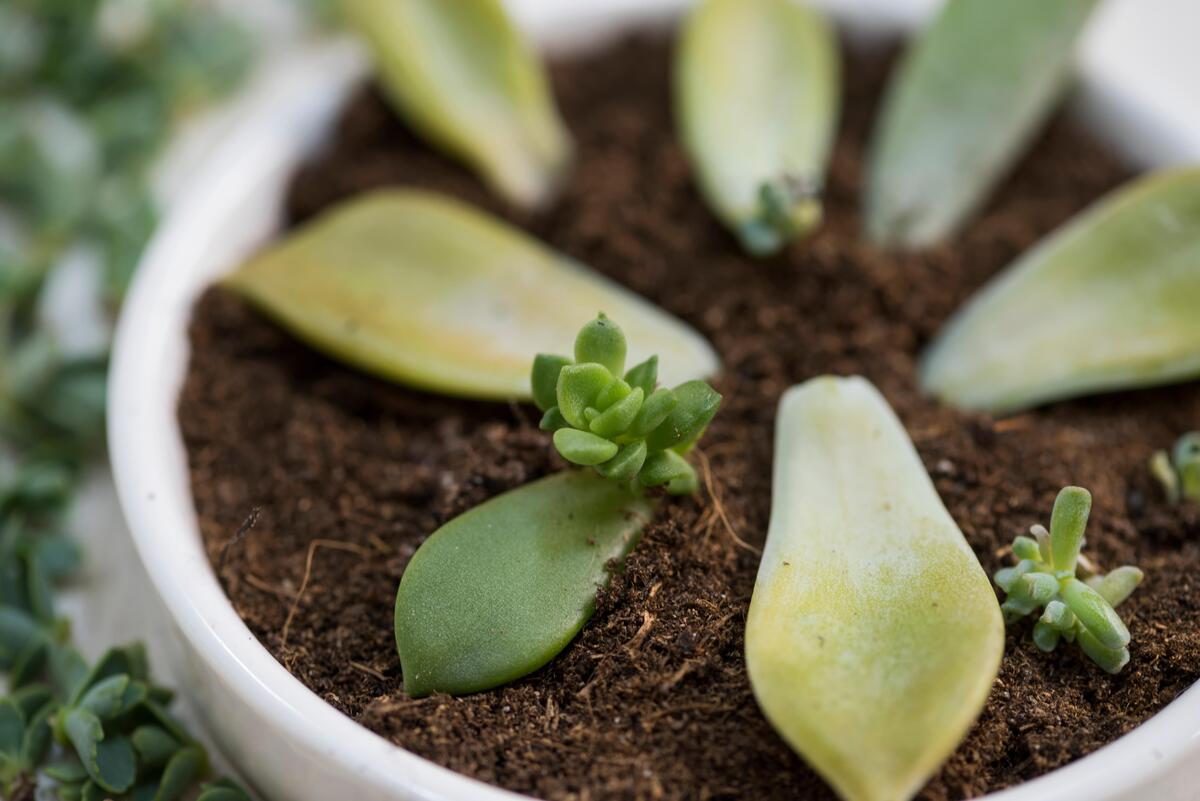Home>Types of Gardening>Ornamental Gardening>How To Replant Baby Succulents
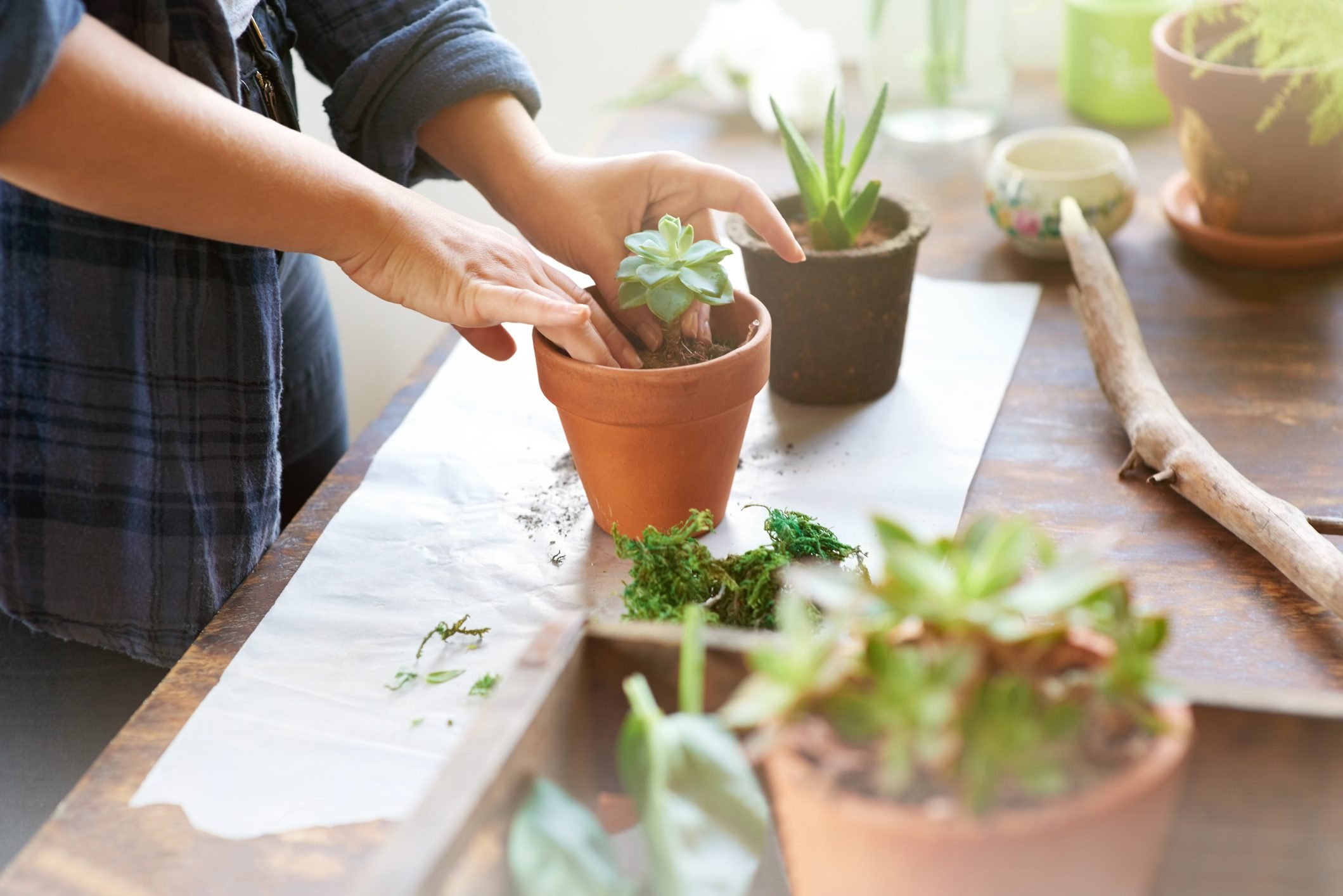

Ornamental Gardening
How To Replant Baby Succulents
Modified: February 9, 2024
Learn how to successfully replant baby succulents and enhance your ornamental gardening skills with our step-by-step guide. Start growing beautiful plants today!
(Many of the links in this article redirect to a specific reviewed product. Your purchase of these products through affiliate links helps to generate commission for Chicagolandgardening.com, at no extra cost. Learn more)
Table of Contents
- Introduction
- Choosing the Right Pot and Soil
- Selecting Healthy Succulents
- Preparing the Pot and Soil
- Removing the Baby Succulents from the Parent Plant
- Planting the Baby Succulents
- Caring for the Baby Succulents
- Watering Techniques
- Providing Adequate Light
- Protecting the Baby Succulents from Pests
- Frequently Asked Questions
- Conclusion
Introduction
Ornamental gardening is a delightful hobby that brings beauty and tranquility to any outdoor space. One of the most fascinating aspects of this practice is propagating baby succulents. Whether you are a seasoned gardener or a beginner, the process of replanting baby succulents can be a rewarding and fulfilling experience.
Succulents are a diverse group of plants that store water in their leaves, stems, or roots. They come in various shapes, sizes, and colors, making them a popular choice for both indoor and outdoor gardens. Replanting baby succulents allows you to expand your collection, create unique arrangements, or share them with fellow gardening enthusiasts.
In this article, we will explore the step-by-step process of replanting baby succulents, ensuring their healthy growth and development. From selecting the right pot and soil to caring for the young plants, we will cover everything you need to know to successfully propagate your succulent collection.
So, roll up your sleeves, grab your gardening tools, and let’s dive into the world of replanting baby succulents!
Choosing the Right Pot and Soil
When it comes to replanting baby succulents, selecting the appropriate pot and soil is essential for their optimal growth and development. Here are some factors to consider when choosing the right pot and soil:
- Pot Size: Baby succulents have small root systems, so it’s best to choose a pot that is proportionate to their size. A pot that is too large could retain excess moisture and lead to root rot, while a pot that is too small could restrict their growth. Aim for a pot that allows room for the succulent to grow and has drainage holes to prevent water from stagnating.
- Pot Material: Clay pots are a popular choice for succulents as they are porous and allow for better moisture evaporation. This helps prevent overwatering, which can be detrimental to succulents. However, you can also opt for plastic or ceramic pots, as long as they have drainage holes.
- Soil Type: Succulents thrive in well-draining soil that allows excess water to pass through easily. It’s recommended to use a specialized succulent or cactus mix, which has a higher ratio of sand or perlite to improve drainage. Avoid using regular potting soil, as it tends to retain moisture for longer durations.
- Soil Composition: Succulents prefer a soil mix that is light, airy, and has good water retention properties. You can create your own succulent mix by combining equal parts of cactus soil, perlite, and coarse sand. This composition promotes good drainage while providing enough nutrients for the succulents to thrive.
Remember, selecting the right pot and soil is crucial for the health and survival of your baby succulents. It sets the foundation for their growth and ensures they have a suitable environment to flourish. So take your time to choose the perfect pot and create the ideal soil mix, and your succulents will thank you with vibrant foliage and robust growth.
Selecting Healthy Succulents
When replanting baby succulents, it’s important to start with healthy plants to give them the best chance of thriving. Here are some tips for selecting healthy succulents:
- Appearance: Look for succulents with plump and firm leaves. Avoid plants with mushy or discolored leaves, as these may indicate rot or disease. The leaves should be a vibrant green color, unless the specific variety naturally has different colors.
- Roots: Check the roots of the succulent by gently removing it from its pot. Healthy roots should be white or pale in color and firm to the touch. Avoid plants with brown or mushy roots, as this may be a sign of root rot.
- Pests: Examine the succulent for any signs of pests such as aphids, mealybugs, or spider mites. Look for webbing, sticky residue, or small black dots on the leaves. Select plants that are free from pests to prevent the spread to other succulents.
- Size: Consider the size of the succulent in relation to the pot you will be transplanting it into. Avoid purchasing succulents that are too large for the pot, as this can lead to overcrowding and hinder their growth.
- Species Compatibility: If you plan to create succulent arrangements or groupings, choose succulents that are compatible in terms of light and water requirements. This will ensure that all the plants in the grouping can thrive together.
By selecting healthy succulents, you are setting the stage for successful replanting. Healthy plants are more likely to adapt to their new environment and establish themselves quickly. Take your time when choosing succulents, and don’t be afraid to ask questions or seek advice from experienced gardeners or nursery staff.
Preparing the Pot and Soil
Before replanting baby succulents, it’s crucial to prepare the pot and soil to create an optimal growing environment. Here are the steps to prepare the pot and soil:
- Clean the Pot: Start by cleaning the pot thoroughly to remove any dirt or debris. If you’re reusing a pot, wash it with soap and water and sterilize it with a diluted bleach solution to eliminate any pathogens or pests that could harm the succulents.
- Add Drainage Material: To ensure proper drainage, place a layer of small rocks, broken pottery pieces, or coffee filters at the bottom of the pot. This creates a barrier to prevent the soil from clogging the drainage holes and helps excess water flow out of the pot.
- Prepare the Soil: If you’re using a pre-mixed succulent/cactus soil, it’s ready to use. However, if you’re making your own soil mix, combine equal parts of cactus soil, perlite, and coarse sand. Thoroughly mix the components to ensure an even distribution of nutrients and to enhance drainage.
- Moisten the Soil: Before adding the soil to the pot, moisten it slightly with water. It should be damp but not soaking wet. This will help the soil settle and provide a good foundation for the succulents to establish their roots.
- Fill the Pot: Fill the pot with the prepared soil, leaving enough space at the top to accommodate the baby succulents. Gently tamp down the soil to remove any air pockets and create a level surface for planting.
By properly preparing the pot and soil, you are ensuring a favorable environment for the baby succulents to thrive. A clean pot, adequate drainage, and a well-balanced soil mix will promote healthy root growth and prevent waterlogged conditions that can lead to root rot.
Removing the Baby Succulents from the Parent Plant
Once the baby succulents are ready to be replanted, it’s time to carefully remove them from the parent plant. Follow these steps for a successful separation:
- Choose the Right Time: The best time to remove baby succulents from the parent plant is when they have grown to about one-third of the size of the parent plant. At this stage, they are more likely to survive and establish themselves in a new pot.
- Prepare a Sterilized Tool: Using a sterilized knife or pair of scissors, carefully cut the baby succulent’s stem from the parent plant. Make sure to cut as close to the base of the baby succulent as possible to minimize damage.
- Let the Cut Heal: After removing the baby succulents, leave them in a dry, shaded area or on a paper towel for a few days to allow the cut ends to callus over. This will help prevent rot and infection when they are replanted.
- Optional: Dip in Rooting Hormone: If desired, you can dip the cut ends of the baby succulents in a rooting hormone powder before replanting. This can enhance root growth and increase their chances of survival.
- Patience is Key: It’s important to note that not all baby succulents will root and survive. Some may wither or fail to establish themselves. Don’t be discouraged – this is a natural part of the propagation process. Simply focus on the ones that show signs of healthy growth.
By carefully removing the baby succulents from the parent plant and allowing them to callus, you are giving them a better chance to root and thrive in their new environment. When handled with care and patience, the separated baby succulents have the potential to grow into beautiful plants of their own.
Planting the Baby Succulents
After successfully separating the baby succulents from the parent plant, it’s time to plant them in their new homes. Follow these steps to ensure proper planting:
- Prepare the Pot: Make a small hole in the prepared soil of the pot using your finger or a small tool. Ensure the hole is deep enough to accommodate the roots of the baby succulent.
- Place the Baby Succulent: Gently place the baby succulent into the hole, positioning it so that the roots are spread out and not cramped. Take care not to bury the stem, as this can cause stem rot.
- Secure the Succulent: Lightly press the soil around the base of the baby succulent to secure it in place. Ensure the plant is stable and upright.
- Repeat the Process: If you have multiple baby succulents to plant, repeat the process, leaving enough space between each plant to allow for growth and proper air circulation.
- Water the Succulents: After planting, give the succulents a gentle watering. Be careful not to overwater; the soil should be moist but not waterlogged. Allow the soil to dry out completely between waterings to prevent rot and ensure healthy root development.
- Find the Right Location: Place the newly planted baby succulents in a location where they will receive adequate sunlight. Most succulents require bright, indirect light for at least six hours a day. Avoid exposing them to direct sunlight, especially during the hot afternoon hours, as this can cause sunburn.
By following these steps, you are providing the baby succulents with a suitable environment to establish their roots and grow. Remember to be gentle when handling the delicate plants and avoid disturbing the roots as much as possible. With proper care and attention, these baby succulents will soon flourish into beautiful and unique additions to your garden or indoor space.
Caring for the Baby Succulents
Once you have successfully planted the baby succulents, it’s important to provide them with proper care to ensure their healthy growth. Here are some essential tips for caring for your baby succulents:
- Watering Techniques: Succulents are adapted to survive in arid conditions and have low water requirements. It’s crucial to avoid overwatering, as this can lead to root rot. Instead, water your baby succulents sparingly, allowing the soil to dry out completely between waterings. A good rule of thumb is to water them when the soil is dry to the touch, typically every 7-10 days, depending on environmental conditions.
- Providing Adequate Light: Baby succulents require bright, indirect light to grow properly. Place them near a window or in a well-lit area, ensuring they receive at least six hours of sunlight each day. If grown indoors, you may need to rotate the pots regularly to promote even growth and prevent the plants from leaning towards the light source.
- Protecting from Extreme Temperatures: Succulents are sensitive to extreme temperatures. Avoid exposing them to freezing cold or scorching heat, as it can cause damage or even kill the plants. If necessary, move them to a more suitable location or provide protection during extreme weather conditions.
- Fertilizer Application: Baby succulents do not require frequent fertilization, especially during their initial stages of growth. Wait until they have established a strong root system before applying a diluted liquid fertilizer once every few months during the growing season. A balanced succulent fertilizer or a diluted general-purpose fertilizer can be used following the manufacturer’s instructions.
- Monitoring for Pests and Diseases: Regularly inspect your baby succulents for any signs of pests such as aphids, mealybugs, or spider mites. If necessary, treat the affected plants with an organic insecticide or wipe off the pests with a cotton swab dipped in rubbing alcohol. Additionally, watch out for signs of disease or fungal infections, such as rotting or yellowing leaves, and take appropriate measures to address the issue.
- Regular Maintenance: Remove any dead or yellowing leaves from the baby succulents to maintain their overall health and appearance. This will also help prevent the spread of diseases and improve air circulation around the plants.
By providing proper care to your baby succulents, you are setting them up for long-term success and ensuring they thrive in their new environment. Stay attentive to their needs, observe any changes in their appearance, and make adjustments as necessary. With time and care, your baby succulents will grow into beautiful, mature plants.
Watering Techniques
Proper watering is essential for the health and survival of baby succulents. Succulents are well-adapted to arid environments and have low water requirements. Here are some important watering techniques to keep in mind:
- Determine Watering Needs: Succulents are drought-tolerant plants that store water in their leaves and stems. Before watering, assess the moisture level of the soil by sticking your finger about an inch into the soil. Only water when the soil is completely dry, as succulents are prone to root rot if overwatered.
- Watering Frequency: The frequency of watering depends on various factors such as the climate, temperature, humidity, and the specific succulent species. As a general guideline, water baby succulents approximately every 7-10 days during the growing season. However, it’s crucial to adjust the watering schedule based on the plant’s needs and environmental conditions.
- Watering Method: When watering baby succulents, it’s essential to use a gentle and precise method. Avoid using a heavy stream of water, as it can dislodge the soil and damage the delicate roots. Instead, use a watering can with a narrow spout or a spray bottle to provide a light and controlled amount of water directly to the base of the plant.
- Water Distribution: Direct the water to the base of the baby succulent, rather than watering the leaves. This helps prevent the formation of rot and allows the roots to absorb water efficiently. Avoid getting water on the leaves, as this can create a humid environment that promotes fungal growth.
- Drainage: Adequate drainage is crucial for succulents to prevent waterlogged soil. Ensure that the pot has drainage holes to allow excess water to flow out. After watering, discard any excess water that collects in the saucer or tray beneath the pot to avoid the roots sitting in standing water.
- Observe and Adjust: Pay close attention to your baby succulents and observe any signs of overwatering or underwatering. If the leaves appear mushy, translucent, or discolored, it may indicate overwatering, and you should reduce the frequency of watering. If the leaves become shriveled or wrinkled, it may indicate underwatering, and you should increase the frequency of watering.
By following these watering techniques, you can provide the right amount of water to your baby succulents and prevent common issues such as root rot or dehydration. Remember, it’s always better to underwater than to overwater succulents, as they are more resilient and can tolerate dry conditions better than excessive moisture.
Providing Adequate Light
Proper light exposure is crucial for the healthy growth and development of baby succulents. Succulents are known for their ability to thrive in bright and sunny conditions, but providing the right amount of light is essential. Here are some important points to consider when it comes to providing adequate light for your baby succulents:
- Indoor vs. Outdoor Placement: Depending on the species, baby succulents can be grown both indoors and outdoors. When choosing a location, consider the natural light conditions available in your home or garden. If growing indoors, place them near a sunny window or provide supplemental grow lights to ensure they receive sufficient light.
- Understanding Light Requirements: Different succulent species have varying light requirements. Some prefer direct sunlight, while others thrive in partial shade or filtered light. Research the specific light needs of the succulent species you are growing to provide the appropriate lighting conditions.
- Bright Indirect Light: In general, baby succulents thrive in bright indirect light. This means they should receive bright, diffused light throughout the day, but avoid placing them in direct sunlight, especially during the intense midday hours. Direct sunlight can lead to sunburn and damage the delicate leaves.
- Outdoor Placement: If growing baby succulents outdoors, choose a location that receives morning or afternoon sun, with some shade during the hottest part of the day. Gradually acclimate the succulents to outdoor conditions to prevent sunburn or leaf damage.
- Indoor Placement: When growing baby succulents indoors, rotate the pots periodically to ensure even light exposure on all sides of the plants. This prevents them from leaning excessively toward one direction in search of light.
- Observation and Adjustment: Observe the baby succulents regularly and look for signs that they are receiving the right amount of light. Healthy succulents will have vibrant, colorful leaves that are firm and upright. If the leaves appear stretched, pale, or elongated, it may indicate insufficient light, and you may need to provide brighter lighting conditions.
Remember, finding the right balance of light is crucial for the overall health and appearance of your baby succulents. Proper light exposure promotes compact growth, vibrant colors, and prevents issues like etiolation or reaching. By understanding the light requirements of your specific succulent species and making necessary adjustments, you can provide optimal light conditions for your baby succulents to thrive.
Protecting the Baby Succulents from Pests
Keeping your baby succulents free from pests is essential for their overall health and well-being. Even though succulents are generally resilient, they can still fall victim to common pests. Here are some effective methods to protect your baby succulents from pests:
- Regular Inspection: Inspect your baby succulents regularly for any signs of pests. Look for visible pests like aphids, mealybugs, spider mites, or scale insects. Also, keep an eye out for indicators such as sticky residue, webbing, distorted leaves, or discoloration.
- Natural Remedies: Some common household ingredients and natural remedies can help deter pests from your succulents. For instance, you can create a mixture of water and mild dish soap and use it to gently wipe down the leaves, stems, and even the soil surface. Neem oil is another effective and organic option for pest control.
- Isolation: If you notice a heavily infested baby succulent, it’s best to isolate it from other healthy plants. Quarantining the affected succulent will not only prevent the spread of pests but also allow you to focus on treating the infestation more effectively.
- Insecticidal Soap: In cases of stubborn pest infestations, you can use insecticidal soaps specifically formulated for succulents. These soaps are designed to control common succulent pests without causing harm to the plants. Follow the instructions provided on the product label for safe and effective use.
- Preventive Measures: Take preventive measures to keep pests at bay. Avoid overwatering and excessive fertilizer application, as this can attract pests. Additionally, keep a clean gardening environment by removing fallen leaves or debris, as these can provide hiding spots for pests.
- Beneficial Insects: Introduce beneficial insects like ladybugs or lacewings to your garden or indoor space. These natural predators can help control common succulent pests by feeding on them.
- Regular Cleaning: Clean your gardening tools, pots, and surrounding areas regularly to minimize the chances of pest infestation. Dirty tools or pots can harbor pests or their eggs, which can easily transfer to your baby succulents.
Protecting your baby succulents from pests requires vigilance and taking proactive measures. By practicing regular inspection, using natural remedies, and maintaining a clean environment, you can keep your succulents pest-free and ensure their healthy growth and development.
Frequently Asked Questions
Here are some common questions about replanting baby succulents:
1. How often should I water my baby succulents?
The watering frequency for baby succulents depends on various factors such as the succulent species, climate, and environmental conditions. As a general guideline, water your baby succulents every 7-10 days, allowing the soil to dry out completely between waterings.
2. Can I use regular potting soil for baby succulents?
Regular potting soil is not suitable for succulents as it retains moisture for longer periods. It’s recommended to use a well-draining succulent or cactus soil mix or create your own by combining equal parts of cactus soil, perlite, and coarse sand.
3. How do I know if my baby succulents are getting enough light?
Healthy baby succulents will display vibrant, colorful leaves and compact growth. If the leaves appear stretched or elongated, it may indicate insufficient light. Place them in a location where they receive bright, indirect light for at least six hours a day.
4. How can I prevent overwatering my baby succulents?
To prevent overwatering, ensure that the succulent pots have drainage holes to allow excess water to flow out. Water sparingly, allowing the soil to dry out completely between waterings. Remember, it’s better to underwater than to overwater succulents as they are more resilient to drought conditions.
5. How can I protect my baby succulents from pests?
Regularly inspect your baby succulents for signs of pests and take prompt action if any are found. Wipe down the leaves and stems with a mild soap solution or use organic insecticides if necessary. Maintain a clean gardening environment and avoid overwatering or over-fertilizing, as these can attract pests.
6. Can I propagate baby succulents from leaves?
Yes, many succulent species can be propagated from leaves. Take a healthy leaf cutting, let it dry and callus for a few days, then place it on top of well-draining soil. Mist the soil occasionally to keep it lightly moist, and new baby succulents will eventually sprout from the leaf.
7. How long does it take for baby succulents to grow into mature plants?
The time it takes for baby succulents to grow into mature plants varies depending on the succulent species and environmental conditions. Generally, it can take several months to a couple of years for baby succulents to reach their full size and maturity.
Remember, each succulent is unique, and their requirements may vary. If you have additional questions or concerns about your specific baby succulents, it’s always helpful to consult with gardening experts or seek advice from fellow succulent enthusiasts.
Conclusion
Replanting baby succulents is a rewarding and enjoyable practice that allows you to expand your succulent collection, create beautiful arrangements, and share your love for gardening with others. By following the steps outlined in this article, including choosing the right pot and soil, selecting healthy succulents, removing them from the parent plant, and providing proper care, you can ensure the successful growth and development of your baby succulents.
Remember to choose pots with drainage holes, use well-draining soil, and provide adequate light for your baby succulents to thrive. Be mindful of their watering needs, avoiding overwatering and adjusting the frequency based on their specific requirements. Take proactive measures to protect your succulents from pests, and maintain a clean and healthy gardening environment.
With patience, care, and a little bit of gardening love, your baby succulents will grow into beautiful and mature plants, bringing a touch of nature’s beauty to your home or garden. Enjoy the journey of nurturing these unique and fascinating plants, and be proud of the green oasis you create. Happy replanting!
